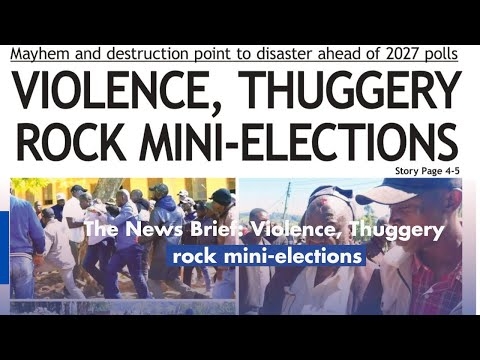Will the calm after the storm mark the end of another season of tear gas?
Farewell to tear gas may come when a critical mass of conscientious citizens understand the value of electoral justice to democracy. That could be when compassion for humanity and justice replace vanity of power.
Or when reason settles disputes before they explode into public demonstrations. When that will be, is for the citizenry to decide.
The most memorable moment of post-2017 general election tension was the day a misadventurous police officer lobbed a tear gas canister that yielded unexpected results. The canister reportedly hit a power supply line, in front of the Supreme Court Building in the Nairobi Central Business District.
That the police rattled bees out of their hive was one theory explaining the arrival of the buzzing insects. However, how the bees joined street demonstrations remains an unsettled historical fact.
Were the bees brought in by zealous National Super Alliance or Jubilee partisans? NASA and Jubilee – the rival political formations of the 2017 general election – were then feuding over the results of the presidential election results?
Tear gas and the ensuing smog pushed enraged bees out of their unlikely hive. It was pandemonium. Court watchers, street hang-arounds and other midday Nairobi freelance crowds – young and old, men and women, unformed and civilian, athletic and obese – ran helter-skelter.
The bees were equal-opportunity stingers. They stung everyone on their way. Their fairness exposed the irony of a rigged presidential election, which the Supreme Court later nullified.
Tear gas had clogged the Nairobi skyline for hours that day. Then bees arrived to refine the melange of anxiety, panic and confusion. Tears flowed; the victims cried. It was everyone on their own, as the sting of buzzing bees accentuated the irritation of pungent tear gas.
There was too much confusion for one midday in the Nairobi heat. The people caught in the melee were running away from the searing tear gas. As if tear gas wasn’t obnoxious enough, bees joined the fray. The new arrivals dispersed everyone around the court.
Anti-riot police officers were not spared. Police horses weren’t spared the sting. They groaned louder, with every sting of the riotous bees. It was anarchy unleashed as the country awaited the verdict of the Supreme Court on the conduct of the 2017 general election.
There was a brighter side to the stampede. A reporter dropped his gear to help a physically-impaired beggar. The best of humanity was unleashed amidst the hate-filled Nairobi, floating with clouds of tear gas.
Local chemists are yet to study how tear gas changes the chemistry of the ecosphere. The flood of tear gas should interest researchers. They should invent something less obnoxious. The history of tear gas should interest users and victims, especially in the era of climate change.
The suffocating smog, like thick, engulfing smoke from a wildfire, or burning garbage at a dump site, should interest chemists, environmentalists and other researchers. They should be concerned about the misuse of tear gas.
Tear gas is a chemical weapon that stimulates the mucous membranes of the eye, causing a stinging sensation and tears. It also irritates the upper respiratory tract, resulting in coughs and choking.
Tear gas was first deployed during World War I. France was the first to use tear gas in 1914. It later came into wide use as a way of dispersing mobs, disorienting rioters and breaking up demonstrations.
Latter-day versions of tear gas – a chemical compound – are associated with American chemists Ben Corson and Roger Stoughton, from a 1928 cocktail. The chemical compound was marketed to policing agencies as a “way of turning protestors into a screaming mob.”
Anna Feigenbaum, author of Tear Gas: From the battlefields of World War I to the streets of today, documents massive use of tear gas in riot controls in France, South Africa and the United States during the Depression in the 1930s.
Amnesty International cites misuse of tear gas in 115 countries, including France, Guatemala, India, Israeli-Occupied Palestinian Territories, Lebanon, Mali, Uganda, Tunisia, Serbia, and Nigeria.
Abuse, Amnesty International says, arises from lack of regulations of appropriate use or standardised formulations of toxicity, questionable decision-making of policing practices, and scant accountability and training of police officers deploying tear gas.
University journalism lecturer and climate change local actions advocate
















